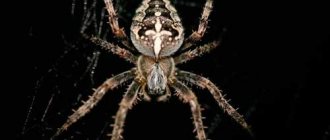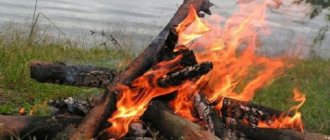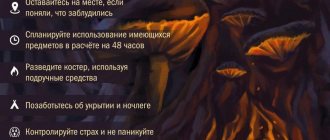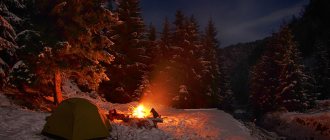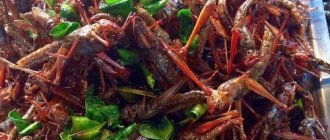20 April48314animals record holdersdangerous animals
We all know about the dangers that various animals can pose. This applies to everyone, because some animals we just heard about, while others live next to us. Some of them are extremely aggressive, others are deadly toxic, and others are dangerous due to their size. Below you will find a description of the most dangerous animals in the world and learn a lot of new and interesting things about them.
Fifth place - wolf
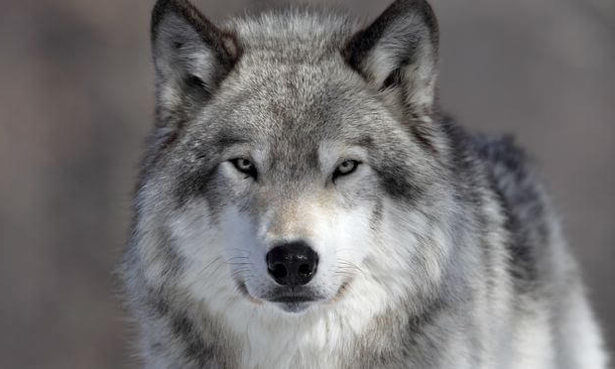
The wolf is a large predatory animal from the canine family. The very name of this animal sounds scary - it is believed that the word “wolf” comes from the word “drag”, because the wolf drags its prey in front of itself. The body length of a large wolf reaches 210 cm including the tail, and the height at the withers is about 90 cm; the animal weighs about 80 kg, that is, the dimensions are quite impressive.
Wolves are born hunters, distinguished by strength, agility and endurance. They hunt both wild animals: deer, elk, roe deer, wild boars, and domestic animals: horses, cows, sheep. Hungry wolves are often content with small prey - hares, foxes, birds, frogs and lizards.
There are known cases of wolves attacking people. Both healthy animals and those with rabies can attack humans. Rabid animals are very dangerous, as they are not only aggressive, but also carriers of a deadly disease. Attacks by healthy wolves on humans, as a rule, occur during times of famine or during the period of feeding cubs.
Interesting: African ostrich - habitat, lifestyle, interesting facts, photos and videos
Viper

This is the most common snake in Russia. It has a dark color, so it is difficult to see. It’s good that she doesn’t attack just like that - you need to step on her or provoke her. They live in forests and steppes, near swamps, near rivers and even near villages. Viper venom is not always fatal. It is most dangerous if the bite occurs on the upper limbs, but a bite on the leg will not go away without a trace.
You can even hear the viper, because it hisses and rushes, but does not always try to bite right away. If you do get bitten, try to move as little as possible. If you are not alone, you need your companion to help you suck the poison out of the wound.
Elk
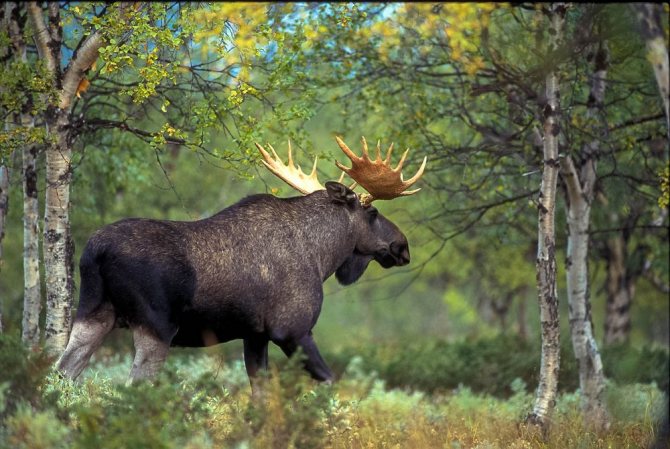
During the mating season, moose can easily trample a person. Even bears are afraid of these animals, because they are perhaps the most massive and powerful inhabitants of the forests of Russia. Elk is a shy animal, but very dangerous.
If you see a moose in the forest, you should be extremely careful. Its huge horns can cause damage to the upper part of the human body, and its mass of 600-700 kilograms is enough to easily break bones.
Mosquitoes
Well, the most dangerous creature, oddly enough, is the mosquito. The reason is that it carries malaria.
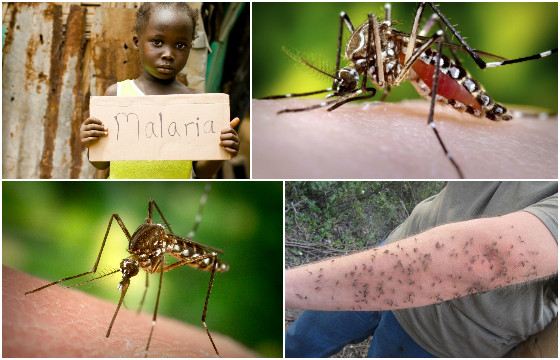
Small pests kill up to three million people a year. Almost all cases occur in areas of Africa. And almost all victims of these dangerous insects are children under the age of 5 years. The editors of uznayvse.ru would like to note that in Russia mosquitoes do not transmit malaria. Subscribe to our channel on Yandex.Zen and Instagram
Second place - brown bear
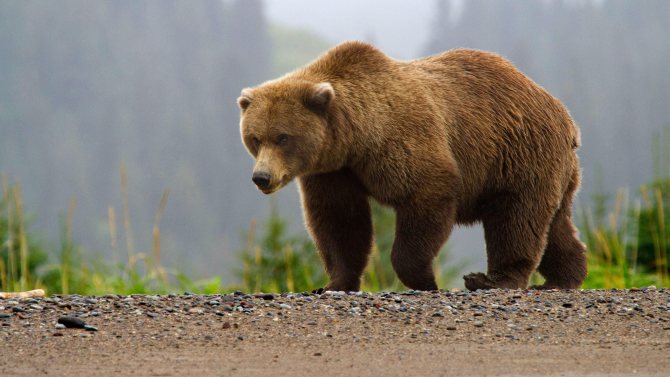
The brown bear that everyone is used to seeing in the circus is not at all as good-natured as it seems. Meeting a hungry bear in the forest does not bode well. The brown bear is one of the largest predatory animals on our planet. The weight of the largest males can reach 780 kg, and their body length is 2 meters.
The brown bear's menu mainly consists of plant foods - nuts, berries, tubers and roots. Animal food makes up about a quarter of a bear's diet; its victims can be both large ungulates and small ones - amphibians, reptiles, rodents and insects. Bears attack large animals more often in the spring, when there are still few plants and fruits.
It is not advisable to meet a brown bear in the wild. Particularly dangerous are bears that have not hibernated during the winter. Hungry connecting rods roam in search of food and attack anyone who gets in their way. Mother bears protecting their cubs are also very dangerous.
Third place - Amur tiger

The largest animal from the cat family is the Amur tiger. The body length of a large male reaches 380 cm, height – 115 cm, and weight – 300 kg. Now the number of these animals is small, they are protected and listed in the Red Book. The Amur tiger is a nocturnal predator . It mainly feeds on large prey - deer, roe deer, bears, wapiti, and moose. The tiger can also feast on smaller prey - frogs, mice, birds, fish. An adult male needs to eat about 10 kg of meat per day.
Interesting: Bear - description, habitat, food, enemies, reproduction, species, photos and videos
It is believed that a tiger rarely attacks a person, but such cases are known. So in the Khabarovsk and Primorsky territories over the past 60 years there have been about 10 cases of tiger attacks on humans. A tiger sees very well in the dark, about 5 times better than a human - so it’s better not to meet a tiger at night.
Owners of the forest: wild animals dangerous to humans

Being in nature, you cannot help but meet its inhabitants on your way - animals and birds, or at least traces of their recent presence here. Not only a hunter, but also any tourist and traveler needs to learn to distinguish the tracks of various animals. This skill can save your life twice. In the first case, if due to a lack of food you have to hunt. In the second, the ability to recognize tracks and knowledge of the habits of animals can warn against encountering them. The owners of the forest - wild animals - may not be at all happy with uninvited guests. But not all animals are harmless...
The content of the article
Wild animals: who is better not to meet?
It should be noted that not all animals can be hunted unless you have at least some kind of firearm. Such large animals and predators as wolves , bears , elk , wolverines , and wild boars are out of your reach without weapons. Well, unless you come across an old and sick animal, and you finish it off with a knife.
To avoid such an unpleasant encounter with strong and healthy representatives of the fauna, you should know a few things about their habits and the traces that certain wild animals leave.
First of all, you should pay attention to the so-called trails - the trajectory of the constant movement of animals. This is partly due to the fact that, in part, each individual, flock or herd lives in a certain territory, carefully guards it and moves along a known route for hunting. Therefore, you should stay away from these paths.
Wolf
wolf trail
The movement interval for each animal is individual. Wolves, for example, are very active and often run along their path. More active in the dark. During the warm period they lead a sedentary lifestyle in the den, and in winter they roam. The den is made in cozy dry places in ditches, under tree roots, and less often in burrows. Wolf tracks resemble those of dogs, but differ in shape - they are longer, narrower, and also larger in size, the imprints of the claws and pads of the middle fingers extended forward appear more clearly. The tracks of the front legs are larger than the hind ones. When trotting, they often step “footprint into footprint,” that is, the footprint of the left hind paw steps exactly into the footprint of the right front paw. Because of this, the tracks appear to be located on the same line. By the way, foxes do the same thing, only their tracks are slightly smaller.
Boar
wild boar trail
Boars move along trails mainly at night. You can recognize their presence by characteristic fang marks on tree trunks, by long and stiff hair stuck in the bark, and by “plowed” soil, especially near puddles and ponds. The tracks of a wild boar are very similar to those of an ordinary pig - slightly oblong, oval hooves, blunted in the front. The size of the hoof depends on the size of the animal. These animals are very fast, cunning and ferocious - both males and females. If a boar kills its prey with powerful fangs, then the females can simply knock down a person, bite and trample him to death. Also an incredibly ferocious wounded boar. Even wolves and bears do not dare to attack these animals. Plus, wild boars can swim. So if you still couldn’t avoid meeting them, it’s better to immediately climb a tree, because they also run quite fast (up to 50 km/h).
Elk
moose trail
Moose trails can be seen mainly near water bodies. These animals sleep little, for several hours - early in the morning and in the afternoon. And although they are quite peaceful and clumsy, you should stay away from them in October-November, when the mating season begins. Traces of presence are teeth marks on the bark in the form of oblong stripes. The hoof marks are quite large and are unlikely to be confused with other forest ungulates. They are narrow, pointed, but at the same time quite wide. There are often extensions at the back that leave imprints a couple of centimeters behind the hoof print.
Bear
trace of a bear
And if you can escape from the animals listed above by climbing a tree, then this will not work with a bear and wolverine. An encounter with a bear can be very dangerous, especially if it is spring and the animal is hungry. These animals are very cunning and agile, active regardless of the time of day, but if the bear is well-fed, it is quite good-natured and may not pay any attention to you. Otherwise, it is unlikely that you will be able to hide... The tracks of a bear in winter resemble the tracks of a man in felt boots. In the front part you can see marks from 5 claws, and the placement of the paw - with the toes inward - immediately reveals the owner of the marks. In summer, 5 toe marks are clearly visible on soft ground. In general, the width of the paw is about 20 centimeters (in females it is slightly narrower) and resembles the footprint of a flat-footed person.
Wolverine
trace of a wolverine
Wolverine is a fairly small animal that sleeps during daylight hours. However, do not underestimate this predator. Despite its small size, the wolverine is very cunning and strong, just like a bear, it can climb trees. There are known cases when a wolverine attacked people by jumping from a tree. Oddly enough, wolverine tracks are similar to bear tracks - in size and shape, although these animals have different weight categories. Also, traces of the bear and wolverine are long claw marks on tree trunks.
The dwellings of bears and wolverines are dens under the roots of trees or in ravines, the “roof” of which is insulated with branches, moss and grass. Wolverines can go without a home for a long time and sleep in the snow or roost in the grass.
We will tell you how to recognize the tracks of small animals and hunt them in the next article.
